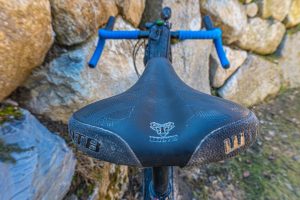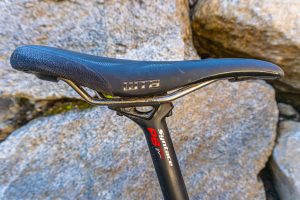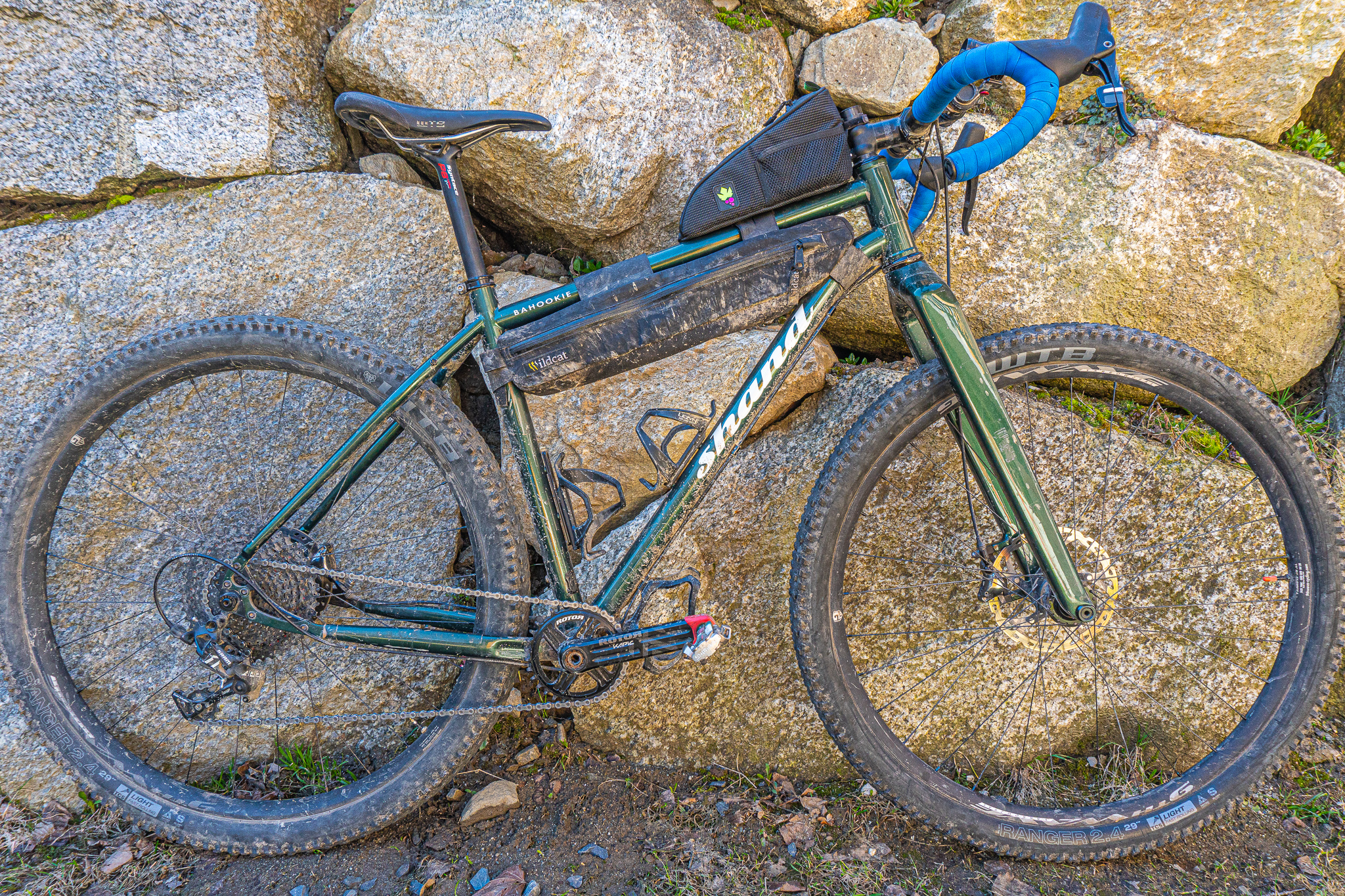I have learnt a few things from long distance bikepack riding, namely about bike set up and products which help to avoid physical issues out on the ride. Having ridden bikes for the best part of 25 years, my younger and more naive self being impervious to many of the pains I experienced back then, but now closer to 50 than 40 I have to adapt to what my physically changing body is telling me and address issues hastily if I want to continue putting in the ultra rides. Regular strength and conditioning exercises are a key element to achieve that as is bike set up. One such aspect is saddle comfort.
With many of us turning to the turbo due to strict restrictions on being allowed out to ride, this is an ideal time to try different positions for improved comfort and performance, especially saddle comfort. With so many saddle options out thereof various shapes and sizes, it can be a real minefield to find the right one, but a simple change in the bike set up can often make your current saddle feel more comfortable.
This isn’t going to be an exhaustive piece about choosing the right saddle, but about some simple and quick adjustments to try at home on the turbo trainer using the saddle you have, or maybe you have other saddles in the spares box, which may have been previously uncomfortable. These could be worth trying again with a few tweaks to bike position.

Shape and width are probably the most important features when looking at a new saddle, but many other aspects add to comfort. Cut outs and channels add a superior amount of pressure relief and are recommended when buying new. Depth of padding is also a consideration, especially if touring or bikepacking is your passion, but higher quality materials (although more expensive of course) can mean thinner padding for the same if not better comfort. Comfort can also come from flex designed into the shell as well from the rail material. Titanium rails add expense, but take advantage of titanium’s innate ability to dampen vibration. Of course, personal experience is everything and some will vouch for the comfort of a full carbon saddle with virtually nil padding.
Long distance comfort for bikepacking is my need and my personal purch has ended up being one of WTB’s long standing models with a modern facelift, the SIlverado. I opted for the titanium railed version in a 142mm width which has carried me through some rough bikepacking events in Israel and Morocco as well as mtb stage races. At first glance, its light weight and light padding wouldn’t seem long distance bikepacking worthy, but it’s the combination of all its features which add up to it being super comfortable and of course dialing in the bike position for the type of riding I do. I had tried saddles with thick padding previously, making the assumption that this was essential for long distance comfort, which personally was found to be quite the contrary.
Our bike position can alter how we sit on the saddle. When I see saddles which are pointed heavily downwards, there is clearly something not right with the handlebar to saddle height difference and/or reach. A slight drop in the nose compared to the rear is normal for numerous curved saddle designs or for pressure reduction on some flat saddles, but if you are finding that you are having to constantly push yourself backwards in the saddle, the incline is too much. You should feel relaxed and stable on the saddle, not wasting energy trying to hold your position on it.

The long, low slung position looks fast, but not many of us are able to effectively hold that position for lengthy periods in comfort. It may not be the saddle which is uncomfortable, but your overall position which is causing pressure points.
Give these few changes a try with the current saddle. WIth your bike set up in the turbo trainer, level your saddle (or nose slightly lower than the rear) if it isn’t already so. Initially, start out by decreasing the handlebar to saddle height. Remove the stem and flip it into the +degree position. This doesn’t always look appealing, but it can solve numerous issues. Doing this adds around 20mm of handlebar height, so maybe remove a 5mm or 10mm spacer so a subtle change can be tried first, then incrementally add height. Inverting the stem also reduces the reach marginally. Jump back on the bike, pedal for a few minutes at various cadences and high as well low resistances. Do this for each change. Any difference in how you feel supported by the saddle? Try adding a 5mm or 10mm spacer back underneath the stem. Adjust saddle angle if needed too.
A slight change in pelvic/back position may help too. Think sitting taller, extending up through the lower back (not from upper back), rotating the pelvis slightly forwards to create a more neutral lower spine. Some riders may experience feeling lighter on the pedals or a slight increase in cadence without putting in any more effort. This position takes time for the muscles to adapt and for it to become a habit.
Reach can also be a contributing factor. Unfortunately, age does generally have a bearing on our ability to maintain a sustained stretched position. Even if you are able to bend down and touch your toes, being able to sustain a long, low position is a different demand on the body and can be fatiguing. Try a 10mm shorter stem maintaining it in the + degree position, making sure to also maintain the adapted back/pelvic posture.
Even if you get the point where a position feels better, try adding an extra 5mm in height or reduce the reach with a shorter stem. This may now feel like a negative change, confirming that the previous position was the best one.
If after all this you still don’t feel that you are getting even support from the saddle and you are still constantly shifting position to relieve pressure points, then it is time to try a different brand and/or model.
My personal adventure bike set up is the Shand Bahookie drop bar, built with their standard taller front end, giving a relaxed, yet strong overall body position, no back ache and long term comfort on the saddle. Traditionally, what has limited my time on the turbo trainer has been saddle area discomfort, but since becoming taller in my position, I can endure the turbo trainer for longer physically. Mentally is another matter. Opportunistic given that here in France lockdown means a complete ban on heading outside for training.
Any questions, feel free to get in touch
Physio | Clinical Bikefitting | Massage







